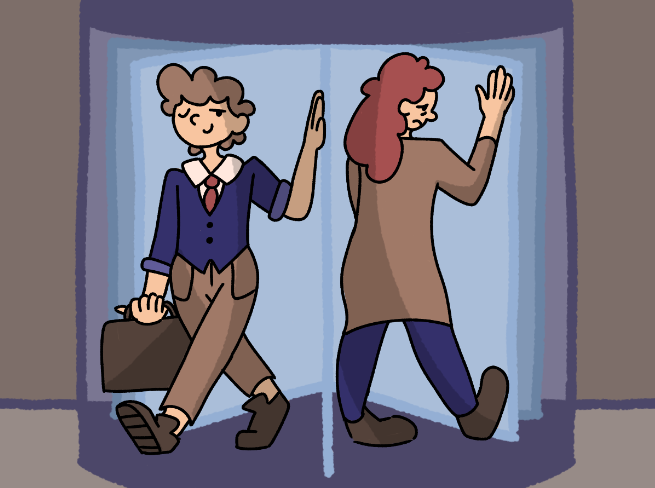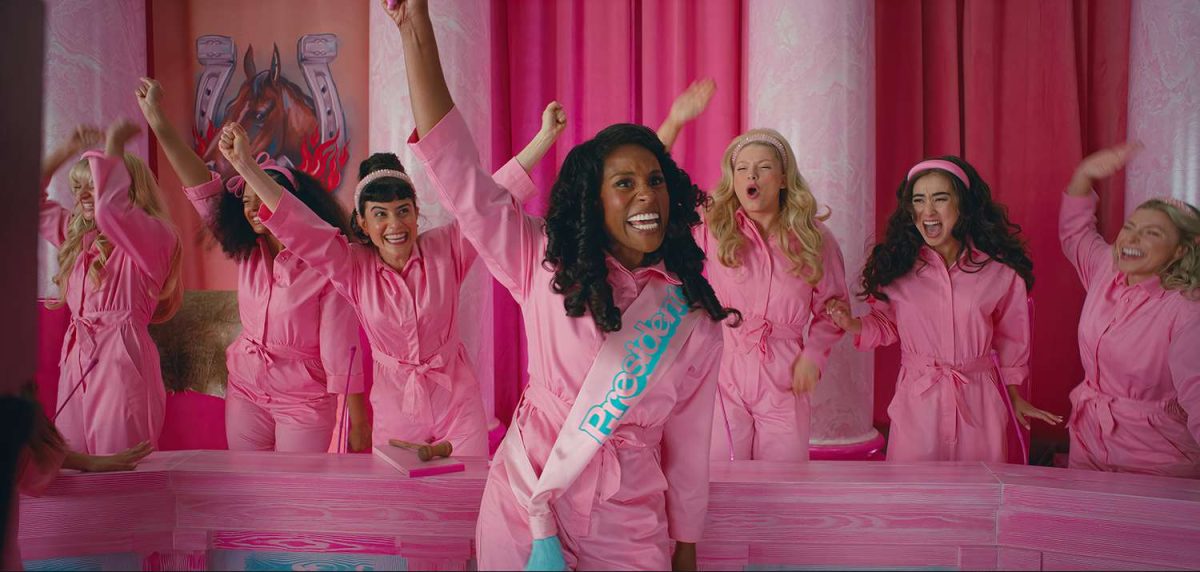If you listen closely in the jungle that is high school, you might hear the howls of screeching chairs pulled out from under desks, the teachers sighing as they grade their 50th assignment of the day or the double-doors slamming as herds of students return from lunch, clutching their bags of fast-food and their swinging keys.
You might also hear the crinkle of potato chip bags from the cafeteria, the clicking of keyboards as English essays are typed or the furious scribbling of last-minute homework.
Or, maybe, you hear the sound of a Hydroflask being dropped.
That familiar sound of clanging metal on the linoleum floor, etched into teenagers’ brains, is the source of stares and stifled giggles. This has become the trademark anthem of what high schoolers call VSCO girls.
A VSCO girl owns a number of colorful water bottles, multiple pairs of sunglasses and an abundance of sticker-clad phone cases. She posts poolside pictures with bright pink flamingo floats, has aesthetically pleasing picnics in the park and most likely owns a Jeep Rubicon.
Stemming from memes on the photo-editing app itself, the term “VSCO girl” has become the newest addition to the Gen-Z dictionary. The definition grew in popularity through YouTube videos titled “Becoming a VSCO Girl For a Day” and a Snapchat story called “Do You Even VSCO?”
A VSCO girl is more than a new type of person: it is a lifestyle that teenagers recognize. To them, it seems VSCO girls only live on the beach and can’t be seen without a scrunchie on their wrist. In their minds, VSCO girls are the newest form of “basic girl,” someone perceived to like mainstream products and trends, who needs to be ridiculed.
The basic girl phenomenon changes ever so slightly among generations, encapsulating the valley girls from the ‘80s, the pink-wearing mean girls from the ‘90s and the pumpkin spice latte-lovers of the 2000s.
The factor that never changes, however, is the audience, eagerly waiting for a new way to put them down.
What exactly makes the basic girl so easy to hate? Maybe teenagers think it’s OK to make fun of these young women because the ridicule is “not that serious.”
Their seemingly surface-level jokes comment on the obvious fact the girl already knows about herself but doesn’t want to admit: she is basic.
The insult of calling someone basic effectively labels the intended target but is just restrained enough as to not be deemed truly cruel.
This casual label, however, normalizes the effect categorizing teenage girls has on their self-esteem.
Calling a girl basic is telling her she is somehow lesser-than by dressing or owning the same things as her friends.
Unlike VSCO girls, their male counterparts, the “bros,” embrace their basic selves. Bros own the same Patagonia t-shirts, don the same backwards caps and wear the same light blue button-down and khaki shorts combination.
Somehow, bros who are equally as much of an identical army are more accepted.
Even the bro-iest of bros are never taunted to the same extent as the basic girls that occupy the same space as them.
Because, in our minds, they really aren’t equal. Bros might be annoying, loud and excessively fratty, but they still aren’t at the same caliber of the privileged, shallow and unoriginal basic girl. They’re harmless. They’re the lesser evil.
Why does society say it’s OK for boys to be this way, but not girls? Because society loves to put down teenage girls, especially on social media, resulting in girls being three times as likely as boys to experience depression.
A growing number of teenage girls are likely to have experienced a depressive stage sometime in their lives, mainly attributed to the stresses of academics and social pressures, according to the Pew Research Center.
While we may not be able to do much regarding the everyday demands of academics, we can lessen the social punches by letting young, impressionable teens live how they choose.
We don’t realize how similar the back-handed comments we make on a regular basis are to outright bullying, how a quick jab aimed at producing laughs might miss and hit someone’s pride instead, making them feel boxed in and smaller than they’ve ever felt.
Although being basic might seem like a social sin to some, the presence of the VSCO girl shouldn’t threaten us.
To let them live in their constant state of summer, wear their oversized souvenir t-shirts or show off their neon pink acrylics is to be knowledgeable of the fact that it’s hard to be a teenager.
How have you seen the basic girl phenomenon discussed in your life? Let us know in the comments.
















































































